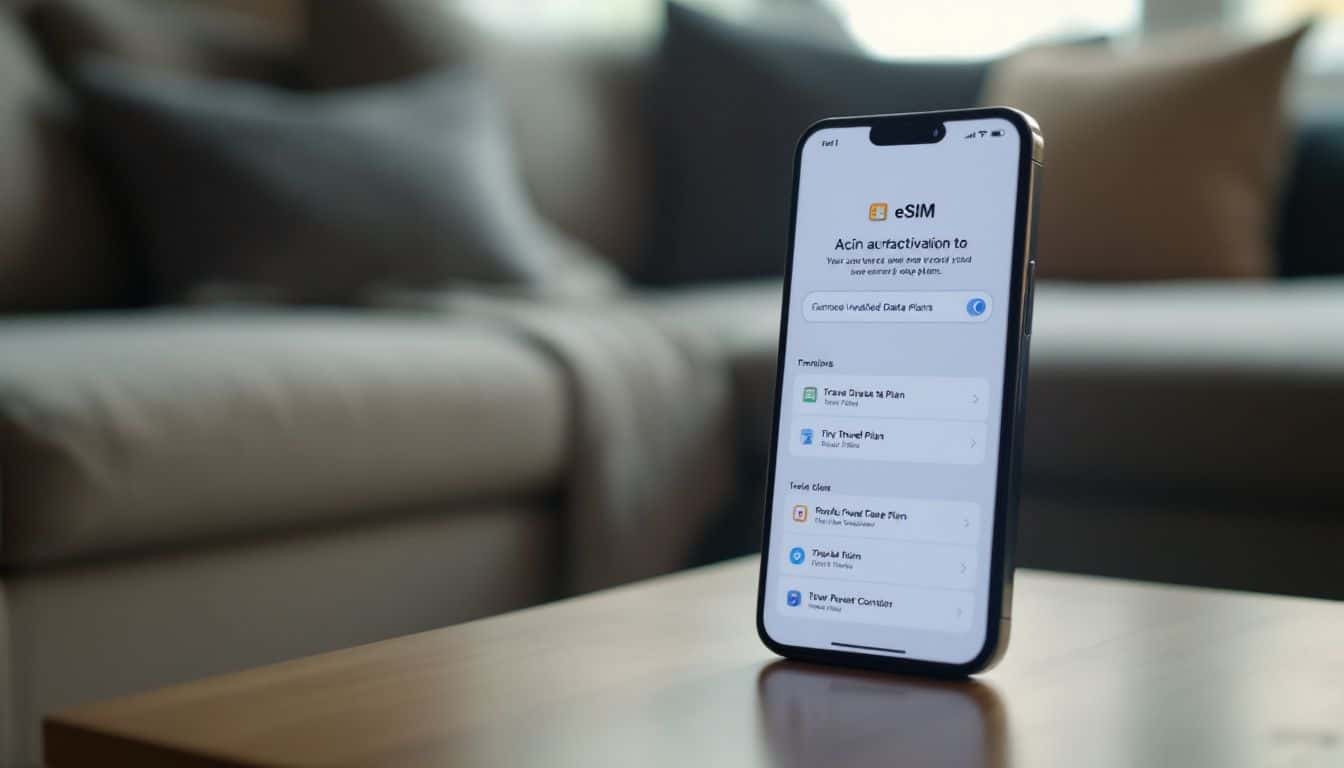Have you ever traveled abroad and struggled with expensive roaming charges or changing SIM cards? A digital SIM, called an eSIM, lets you switch data plans instantly without using a physical SIM card.
In this post we’ll explain clearly how do eSIMs work for travel and share five smart benefits for your next trip abroad. Keep reading to travel smarter!
Key Takeaways
eSIM technology uses digital SIM cards embedded in your phone, so you can easily change data plans—no physical cards needed—and simplify your travels.
Activate your eSIM quickly by scanning the provider’s QR code or using their app, and then conveniently switch profiles right in your phone settings.
Travel eSIMs can help you avoid expensive roaming charges, giving you affordable access in several countries through a single data plan.
Most newer smartphones—including iPhones from the XR onward and many recent Android phones—come ready to use eSIM, letting you smoothly switch networks as you need.
By 2025, eSIM technology will likely be standard in most phones, with AI suggesting the best carriers for your trip and built-in VPN tools offering added security wherever you’re connected.
Table of Contents
What is an eSIM?
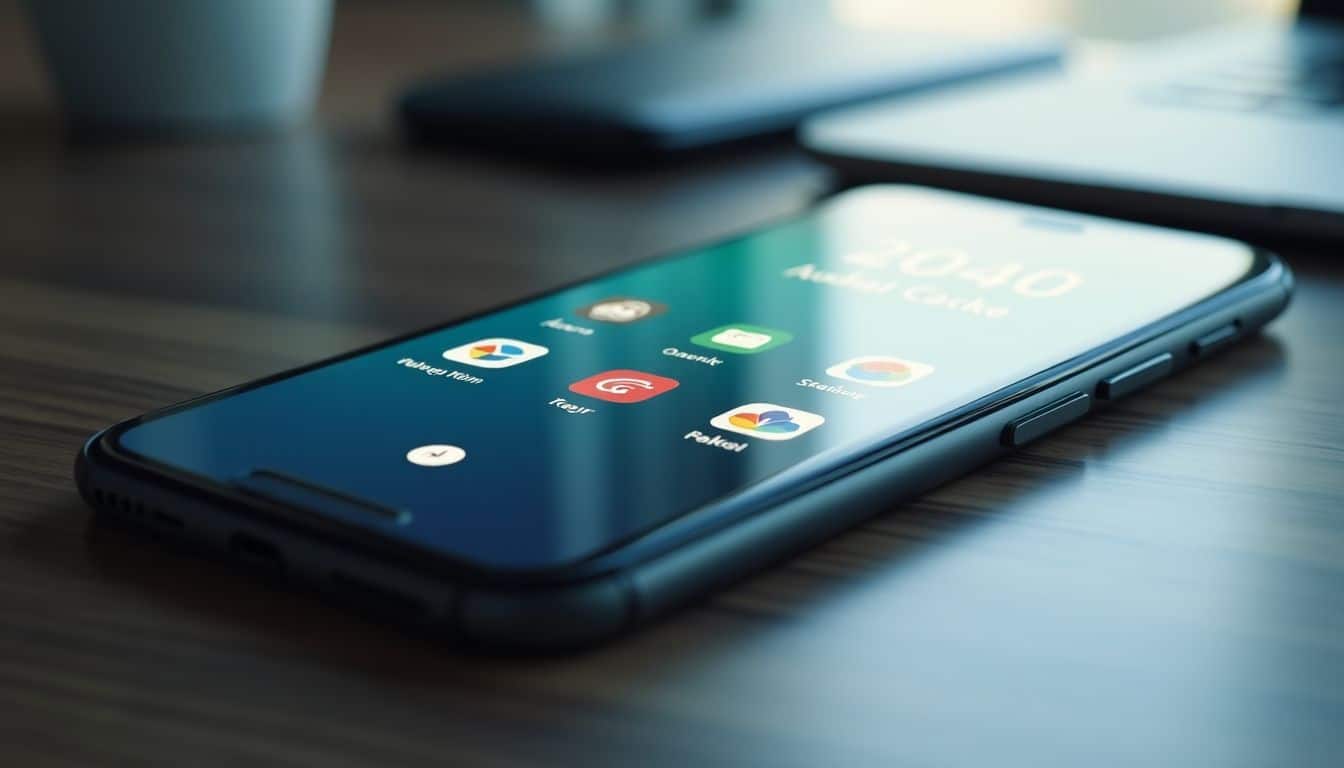
An eSIM is a digital SIM already embedded in your phone or tablet. Unlike traditional plastic SIM cards—which you insert and remove—an eSIM stays inside your device permanently.
It’s basically a tiny electronic chip that lets your device connect to mobile networks, no physical card swaps required. According to Simify, you activate eSIMs digitally instead of heading to a carrier store.
Last summer, during my trip to Paris, I switched over to an eSIM—skipping the hassle of tracking down SIM card shops was awesome!
eSIMs represent the future of travel connectivity – they’re like having multiple phone plans living inside your iPhone or Android without the plastic waste.
What’s great about eSIMs is how flexible they are. You can keep multiple carrier plans stored on one device and easily switch between them with just a few clicks. This built-in subscriber identity module works well on most modern phones—including newer Android devices and even the iPhone 14.
It lets you swap from AT&T to international or local plans fast, without messing around with physical SIM trays. Here’s a quick look at exactly how these digital SIM cards function while you’re overseas.
How Does an eSIM Work for Travel?

eSIMs make travel connections simple with just a few taps on your phone. You can switch between data plans from different countries without swapping physical SIM cards.
Activating an eSIM for travel

Activating an eSIM for your travels is easier than you might think—it lets your phone connect globally, no physical SIM swapping required.
- Pick a travel eSIM plan from services like Airalo, directly on their app or official website. These plans usually have regional options ideal for your destination.
- After purchase, you’ll get a QR code from the eSIM provider, containing the setup details for your connection.
- Go into your phone settings and select the option labeled “Add Cellular Plan” or “Add eSIM”. Your Android or iPhone will then lead you through the next steps.
- Using the phone camera, scan that QR code following the on-screen directions. The necessary network information transfers to your device instantly.
- Give the new eSIM profile a clear title—like “Europe Travel” or “Asia Trip Data”—to quickly recognize it later, especially if you’ve got more than one profile.
- Ensure your data roaming is switched on in settings, which allows connection outside your home country. Most travel plans have roaming included without additional cost.
- Check your connection before departure—send a test message, open a web page—to confirm it’s active and ready for your journey.
- Easily switch from your home SIM to the travel eSIM in settings anytime during your trip. Most newer phones support dual SIM features for this specific purpose.
- Save the QR code somewhere safe, just in case—snap a quick screenshot or email it to yourself for a reliable backup.
- Tweak your data usage settings beforehand to dodge surprise costs. Turning off automatic updates or background app refresh is helpful, especially while travelling in China or similar countries.
Switching between eSIM profiles

Once your travel eSIM is set up, you’ll want a quick, easy method to switch profiles while crossing borders. Switching eSIM profiles is straightforward once you’re familiar with your device’s steps:
- Modern smartphones store multiple eSIM profiles at the same time—letting you jump quickly from one network to another without changing physical cards.
- On iOS, switch profiles easily through Settings > Cellular. Just select your desired eSIM, then tap “Turn On This Line”.
- Android users can usually activate their chosen eSIM by tapping Settings > Network & Internet > SIMs, then picking the profile they want.
- Savvy travelers preload all necessary eSIM profiles at home to save the hassle of finding Wi-Fi on the road.
- Most newer iPhones (XR or later) let you quickly swap eSIM profiles right from Control Center—handy for instant access.
- You can label each profile clearly, such as “France Data” or “Japan Calls”, to easily identify and manage your plans.
- Quickly switch between your work and personal eSIM when crossing into different time zones—just a few taps, and you’re set.
- Travel apps like Airalo simplify eSIM management by giving you a convenient dashboard to organize all your profiles in one spot.
- Your current active eSIM shows up as a small icon in your phone’s status bar, keeping you informed at a quick glance.
- Data usage tracking happens separately for each eSIM—making it easy to check charges and stay within your budget across different countries.
- Inactive eSIM profiles remain asleep in the background—ready to activate, while using no battery life or data until switched on.
Benefits of Using eSIMs for Travel
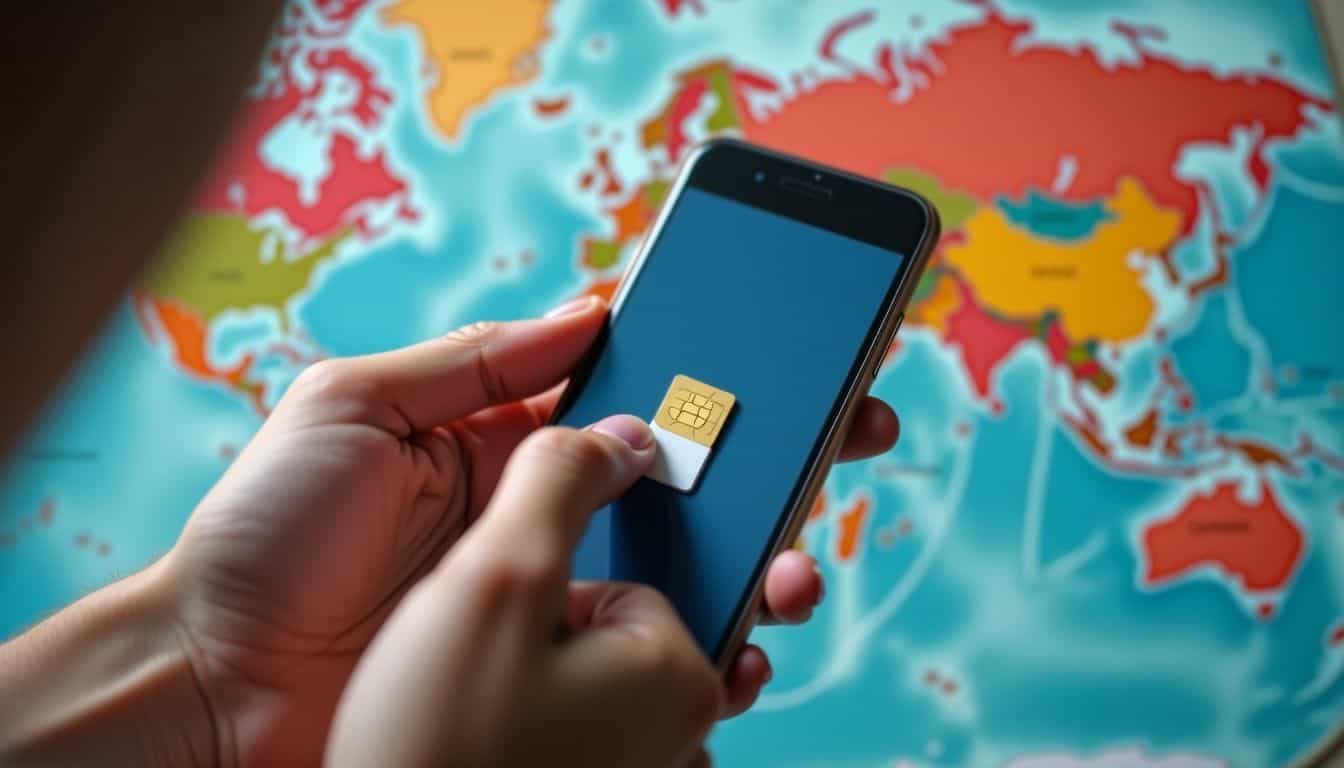
eSIMs offer smart travelers five amazing benefits that make phone connections easier abroad. You’ll discover how these tiny digital chips save you money and stress while keeping you connected in almost any country.
Cost-effective connectivity

Travel eSIMs help you save big compared to pricey roaming fees. Through eSIM providers, local data plans are way cheaper than international rates from your regular carrier. For instance, you can grab a 15GB plan, lasting 30 days, in the Netherlands Antilles for just a small fraction of usual roaming costs.
A lot of women travelers love this affordable option—it keeps them online through the whole trip without coming home to an unpleasant phone bill surprise.
Smart travelers use eSIMs to cut costs while staying connected across borders.
Your phone stays online, ready for calls, texts, and social media updates, all without overspending anxiety. The great thing about eSIM tech is its flexibility—you can easily set it up from anywhere, even before leaving home.
Starting early this way means you won’t end up paying those huge airport prices for physical SIM cards. Next, let’s see how easy network switching can make your travels smoother.
Seamless network switching

Besides saving cash, eSIMs make switching networks super easy while traveling. Last month, during my trip across Europe, I hopped between three different networks without ever touching the SIM tray.
With an eSIM, your phone just picks the strongest available signal automatically. No more searching desperately for Wi-Fi, or suffering random dropouts in isolated places—your connection stays smooth.
Switching networks takes seconds, not minutes, with an eSIM. It digitally stores many carrier profiles, letting your iPhone or Android instantly move to a stronger signal whenever coverage weakens.
This feature really comes in handy if you’re somewhere remote with patchy reception. On my way from Italy to Switzerland, I used the Airalo app to quickly switch providers and stayed connected on Telegram the whole way.
The built-in digital SIM makes these instant network swaps possible, without ever needing to pop out a physical card.
Versatility across regions

Travel eSIMs make international trips easier by letting you use just one digital profile across multiple countries. No more fussing with physical SIM cards or searching around for local shops whenever you cross a border.
Your electronic SIM automatically connects to partnered networks in each new country you visit, making the experience smooth and hassle-free. This feature is especially helpful for touring various countries in Europe or Asia—visiting, say, Germany, France, and Italy, all in one go.
Many eSIM packages include entire regions, not only individual countries. You can check your messages while window-shopping in Paris, access maps during a mountain hike in Switzerland, or stream music while lounging on Italian beaches—all without switching plans or adjusting settings.
The built-in SIM in your iPhone or Android automatically takes care of connection details, leaving you free to enjoy your trip, stress-free and connected.
How to Set Up an eSIM for Travel

Setting up an eSIM for your trip takes just minutes with a few simple steps on your iPhone or Android device – read on to discover how you can skip the hassle of physical SIM cards and enjoy instant data access the moment your plane lands.
Purchase and download a travel eSIM plan
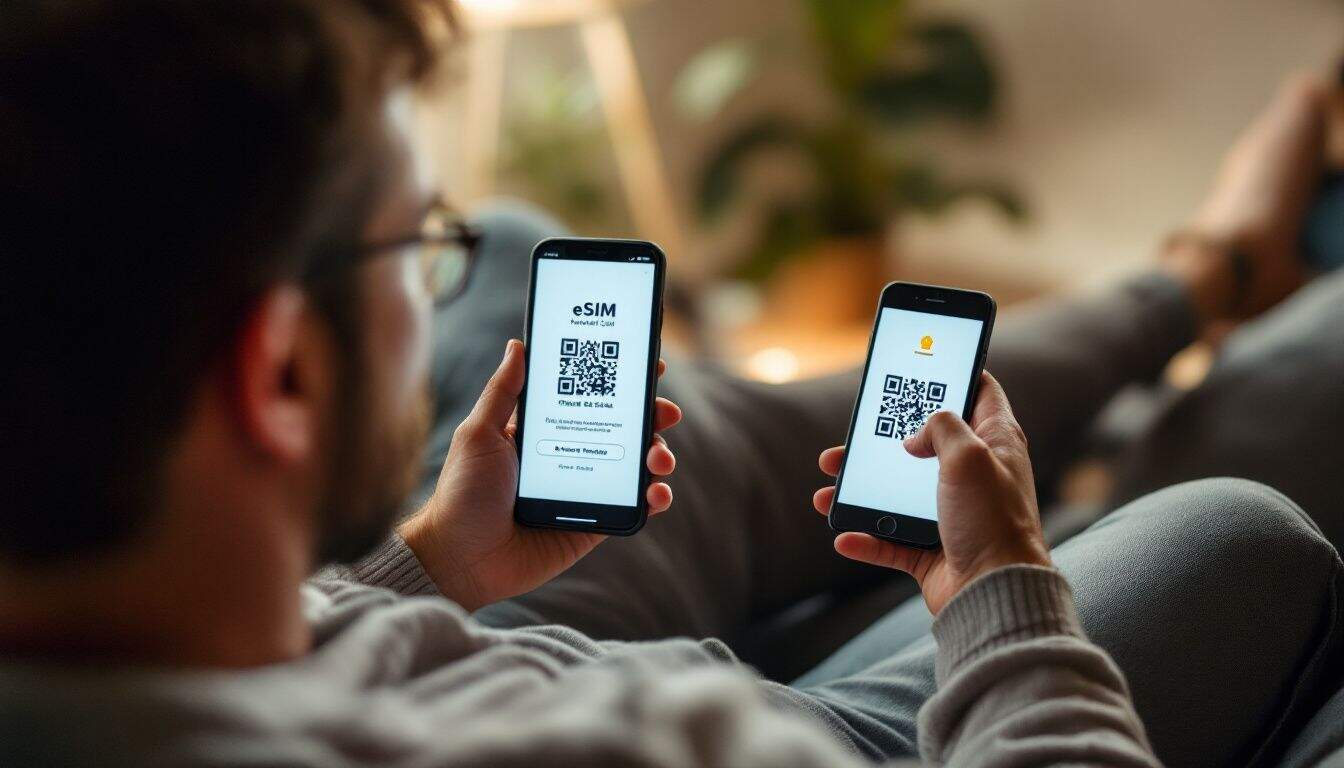
Getting an eSIM for your travels is now quick, simple, and totally online—no store required. Here’s how to get set up:
- Make sure your device supports eSIM—most newer iPhones, iPads, and certain smartwatches have this feature.
- Look into providers offering travel eSIM plans for where you’re headed; many cover over 100 countries and offer various data options.
- Go directly to the provider’s website or get their mobile app through Apple’s App Store or Google Play.
- Pick a data plan that fits your usage; consider things like maps, social media updates, and FaceTime calls.
- Use your credit card, PayPal, or another accepted payment method to purchase your plan.
- Once your payment goes through, you’ll receive a QR code from the company.
- Scan that QR code with your phone’s camera to quickly activate your eSIM profile.
- Turn on your eSIM plan within the phone settings before heading abroad.
- Do a quick check—send a text or browse online—to confirm your connection is working.
- Keep your usual carrier plan handy in case you need to swap profiles anytime during the trip.
Scan the QR code or use the carrier’s app
Setting up your travel eSIM is simple and quick. Here’s how you activate it on your phone:
- You can set up your eSIM easily through a QR code. Open the camera app on your Apple iPhone, aim at the QR code your carrier sends, and your phone instantly adds the virtual SIM.
- Most providers also have their own apps to help you activate eSIM without a QR code. This option comes in handy if you’re already traveling and don’t have the QR code on hand.
- Your phone will ask if you want to add the new mobile service plan. Tap “Continue”, then follow the clear, step-by-step instructions that pop up.
- Many travel eSIMs include simple visual guides, showing you exactly what to do.
- After scanning the QR code, your virtual SIM activates in just a couple of minutes, letting you connect to the internet right away.
- Your device can store several eSIM profiles at once. This means you switch easily between your regular phone service and your travel plan—without having to swap out any physical SIM cards.
- Carrier apps often give you helpful tools to track your data usage, see how much balance you have left, and even add more data if you run low during your travels.
- QR code activation is compatible with many newer phones, like the iPhone XR and later models equipped with eSIM capabilities.
- Even when your trip is over, the eSIM profile stays stored on your device. You can conveniently reactivate and use it again on future visits to the same region.
- You only need a Wi-Fi connection once, during this initial setup phase. After setup, your eSIM works exactly like your regular SIM, supporting calls, SMS messages, and mobile data services.
Configure settings on your device
Getting your eSIM ready for travel only takes a few minutes, once you’ve downloaded your travel plan. For iPhones (models 11 to 16) and compatible Android devices, here’s a quick, easy-to-follow guide:
- Open the Settings app on your phone, tap “Cellular” or “Mobile Data”, depending on your device.
- Select “Add Cellular Plan” or “Add Mobile Plan” to start setting up your eSIM.
- Choose whether you want your eSIM as your main line or as a secondary, travel-only option along with your physical SIM.
- Enable data roaming in Settings for your new eSIM—this lets you use the internet while abroad.
- Set your preferred line for making calls, sending messages, or accessing mobile data, based on how you’ll be traveling.
- Adjust personal hotspot settings, if you’d like to share your data with tablets, laptops, fitness trackers, or other devices.
- Update iMessage and similar messaging apps, so they work seamlessly with the new eSIM line.
- Check AirDrop and other sharing tools, making sure everything functions smoothly using your new connection.
- Before leaving your current Wi-Fi coverage, test your internet browsing and make a quick call—just to make sure your eSIM works.
- Store your QR code or activation information safely—you might need it later to reactivate your eSIM.
Common Questions About Travel eSIMs
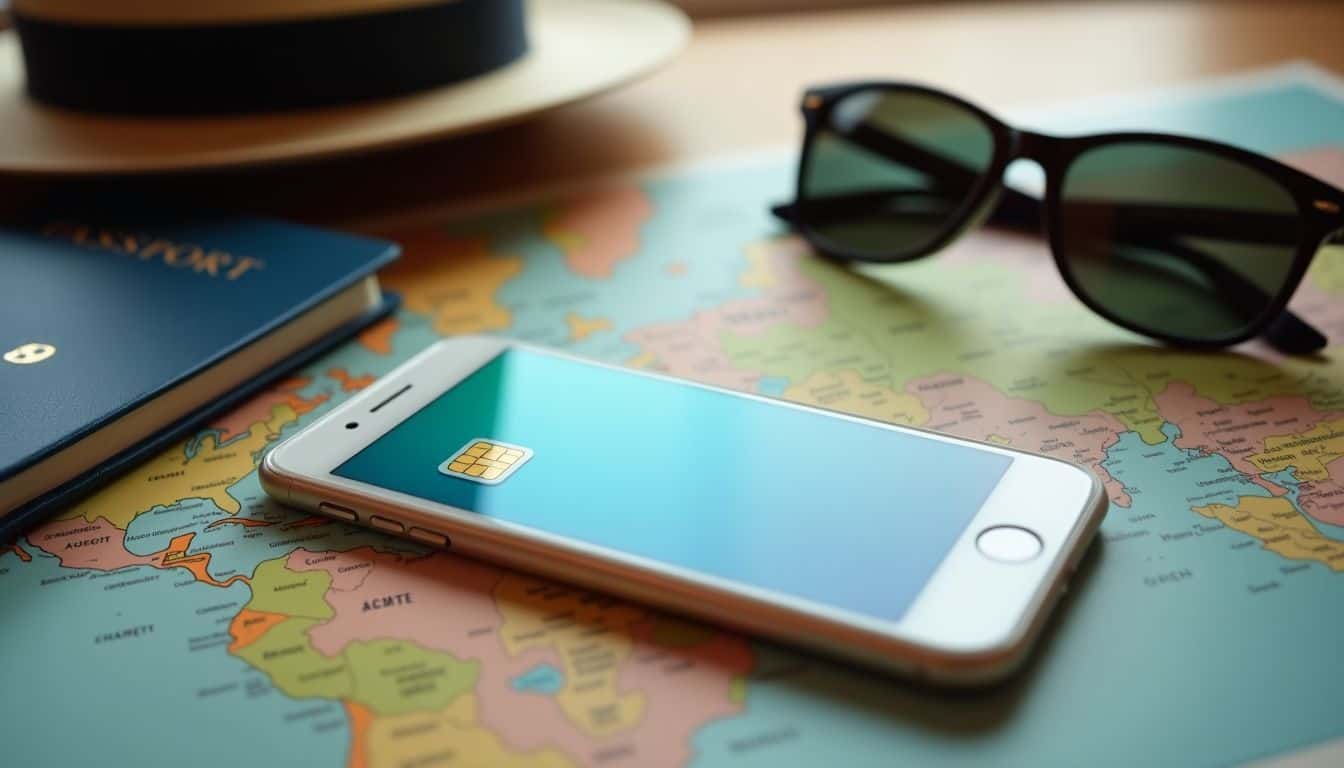
Travelers often ask us many questions about eSIMs before their trips. We’ve gathered the most common concerns to help you decide if an eSIM is right for your next adventure.
Can eSIMs be used internationally?
Absolutely! eSIMs are fantastic for trips abroad—easy, convenient, and hassle-free. An eSIM, or embedded subscriber identity module, connects your smartphone directly to local cellular networks, without needing to swap out physical SIM cards.
The FCC fully endorses this technology, making switching carriers a breeze as you cross borders. In fact, many providers offer travel-friendly plans covering multiple countries or entire regions, which means no more picking up separate data packages wherever you land.
Just activate an eSIM before your trip through Apple’s App Store or the Google Play Store, and you’ll have instant internet access once your plane touches down—no scrambling for Wi-Fi spots or bracing yourself against jaw-dropping roaming charges from your home network.
These virtual SIM cards basically work just like regular travel SIMs, minus the plastic waste. They’re an affordable way to stay online overseas and even let you hold onto your usual phone number.
Plus, lots of them include hotspot features, letting you easily share your data with tablets or laptops. Your phone can store multiple eSIM profiles as well, allowing seamless switching whenever you cross borders—ideal if you often hop from one country or region to another.
And here’s the bonus: you’ll never again have to struggle with those tiny, slippery SIM card trays or worry about losing the little plastic chips during your vacations.
Do eSIMs support hotspots?
Yes, an eSIM supports personal hotspots just as a physical SIM can. Your ability to turn your phone into a portable Wi-Fi hotspot mainly depends on your carrier’s policies—not your SIM card type.
Many travelers enjoy this option since they can link laptops, tablets, and other devices to their phone’s data connection easily. The hotspot functions identically, no matter whether your smartphone has an eSIM or a regular SIM installed.
With this feature, you’ll always have internet access on trips, freeing you from the hassle of searching around for public Wi-Fi. Just make sure to watch your data closely—hotspots can rapidly consume your data allowance and drain your phone’s battery faster than usual.
Most eSIM plans for international travel offer hotspot capability, but it’s always wise to confirm this detail in the prepaid package before you buy.
How Will Travel eSIMs Transform Connectivity in 2025

Travel eSIMs will completely change how we connect overseas by 2025. Most phones will include built-in eSIM technology, replacing outdated physical SIM cards. You’ll just scan a QR code—and immediately get internet access—without needing to search for local SIM vendors.
Regional data plans will also drop in price, as carriers compete harder for travelers’ attention. According to eSIM specialists at Geek Extreme, this digital identity makes smartphones less appealing to thieves, because they can’t easily transfer the connection.
Last month, during my vacation in Japan, I personally experienced how flexible and easy eSIMs already are. Even greater options will become available soon. Artificial intelligence will recommend the ideal carrier for your current location and usage habits.
Your phone could even automatically jump between networks, picking the strongest signal available. VPN services will soon come built into eSIM profiles themselves, making public Wi-Fi connections safer—no more worries about hackers.
High roaming charges and restrictive carrier locks will gradually vanish as eSIM tech creates simpler, safer, and easier mobile options for women travelers around the globe.
People Also Ask
What exactly is an eSIM, and how does it make travel easier?
An eSIM is a virtual version of the SIM card built right into your smartphone—no tiny cards to swap out, ever. It lets you switch seamlessly between various data carriers as you travel, all without needing physical plastic SIMs. This makes trying new plans abroad easy and helps you skip pricey international roaming charges.
Can I connect an eSIM to Wi-Fi while traveling?
Absolutely! eSIMs fully support both cellular networks and Wi-Fi. You can hop onto nearby Wi-Fi hot spots whenever they’re available, then smoothly shift back to your eSIM’s data once you’re out of range.
Will I need special ID or documents to activate a travel eSIM?
Usually, setting up an eSIM only requires basic identification details and takes just a few minutes. Popular platforms like Apple’s App Store offer travel-friendly apps that guide you through a quick online signup—no stacks of paperwork or lost documents to worry about halfway through your trip.
Is it secure to use an eSIM with a VPN while abroad?
Yes, eSIMs pair effectively with Virtual Private Networks (VPNs). Using your eSIM together with a VPN gives you additional privacy protection, especially useful while connecting to public Wi-Fi or using data services abroad.
References
https://simbud.com/how-to-use-esims-for-travel/
https://www.nytimes.com/2023/03/23/technology/personaltech/esim-sim-cards-travel.html (2023-03-23)
https://nordvpn.com/blog/what-is-an-esim/ (2024-05-22)
https://support.apple.com/en-us/118227
https://www.cnet.com/tech/mobile/how-i-discovered-esims-to-be-the-smart-choice-for-travelers/ (2024-05-25)
https://support.apple.com/en-us/118669
https://www.thisexpansiveadventure.com/planning-prep/how-to-use-esims-while-traveling/
https://esimdb.com/blog/travel-esim-faqs/
https://www.globalyo.com/blog/esims-101-do-esims-support-hotspot/ (2024-11-26)
